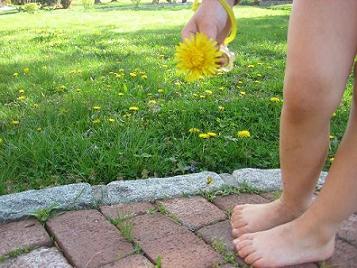
Today is a wickedly windy day here in Westchester. You almost expect to see Margaret Hamilton on her broom flying outside your window. The roar of the wind makes me think of how buildings & houses can withstand such stresses & forces, day in & day out. Architectural supports go back to the medieval age and have been passed down like DNA to builders across the ages.
Gambrel Roof

The Dutch in early NY used this style of roof -- you see it a lot on barns. I always thought the bent shape of the roof was unusual & complex, but it's actually not. Two sets of rafters allow for a greater amount of storage space inside, for example for hay. Tie beams (D & E) connect the two rafters (B & C) and help direct their weight down to the walls of the house. Yeah, love it... move the stress down & out!
The Arch

To support the tremendous weight of the arches, you had to provide a way of transmitting the force. The Romans achieved this with the Keystone Block. The force went down to the top of the Keystone and because of its shape, it then translated the force to the "voussoir blocks", and they in turn translated the force through the impost to the piers. Architectural stress management at its best :)
The Flying Buttress

Yes, we all snickered when we took Art or Architecture 101. The "flying buttress" transmits the horizontal force of a vaulted ceiling, such as in a cathedral, not to a supporting wall, but through it to a counterweight outside the building (now that's thinking out of the box!), so it seems like they fly through the air. If you wanted to keep the cathedral as eggshell-light & ethereal as possible, not heavy and grave, plus add stained glass windows for a delicate touch, then this was a neat solution to avoid thickened support walls while the spires stretched toward Heaven. The flying buttress simply redirected the stress, taking the "fight" outside.

How does this tie in with Gregory...
RESPITE CARE
The taller the walls, the harder it is for them to keep an arch from toppling, so they need to be wider, thicker. For caregivers taking care of young children with ASD, there is an additional supportive wall that not many know about, called respite care. It's a service you can apply for and is based on the recognition that these parents have very tall needs & heavy loads, and need more support.
They will come into your home, and the range of things they do is very wide... they can "babysit" and let you get a few hours of sleep, do your grocery shopping for you or run errands, anything to shunt away the stress for a while.
Undergoing what could be a third of your day of hearing full-blown gasket-blowing tantrums from a toddler or school-age child takes its toll. I have yet to apply for respite care due to lack of time, ironically. But it's said that not everyone can get approved for a variety of reasons.
Signing off, I can't leave out Gregory's favorite arches, of course -- also a great stress reliever for mom.





Hello-Great blog. I'm a mothe rof a non verbal child who has Autism.
ReplyDeletePlease check this out- I have heard you need to be OMRD certified in order to request Respite Care- My paper work is into them just waiting for an answer back.
http://www.omr.state.ny.us/ws/ws_hudsonvalley_resources.jsp
Also- I told Phil to check Dynavox out= it's a communication device for children with Autism.
http://www.dynavoxtech.com/default.aspx
They will test your child on their products to see which one works best!
They are great-they come to your home or child's school etc.
GOOD LUCK!!!!!!!!!!!!
Thank you! This is very helpful & useful. I've been away from my blog for a while due to a busy spell lately at work -- hopefully by now you've received a positive answer to your respite care application. Please write or email anytime if you would like to share anything about your child or if you just need to vent or celebrate! God Bless, -Ann
ReplyDelete